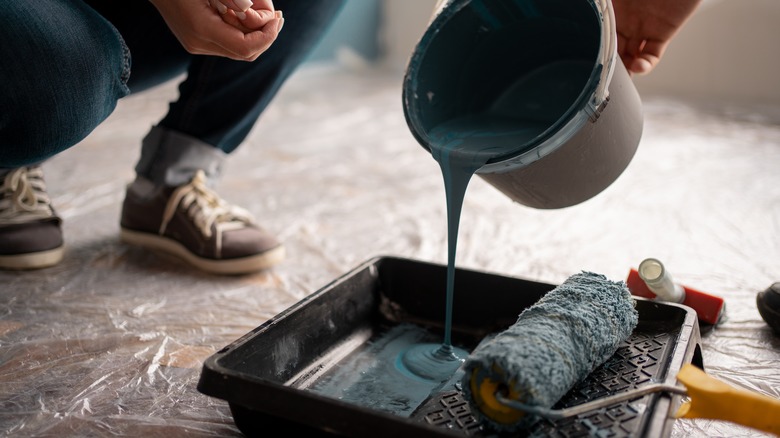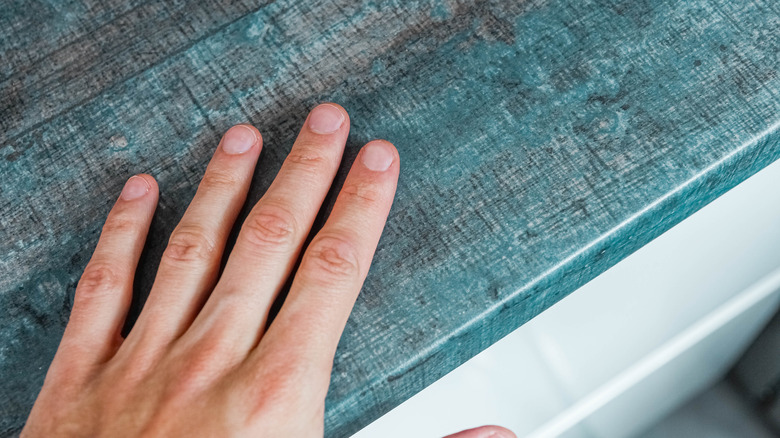Tips For Choosing The Right Type Of Paint To Use On Your Laminate Countertops
Once the go-to material for countertops in most kitchens during the mid-century, laminate often gets a poor rap. You can find it in kitchens badly in need of an update, often showing signs of age like scratches, scorch marks, and cracking edges. While newer design trends favor natural materials like marble or wood, laminate counters are still used in some new kitchens today, though it is often more beautiful and better quality than decades past. If you are looking for a way to update your older laminate without replacing it entirely, the simplest solution for instant impact may be to just paint it. By sanding, priming, painting, and finishing your old laminate counters, you can get a complete transformation for only the cost of paint and other supplies.
Laminate is actually one of the best materials for a painted renovation, but you may ask which is the best paint to use for them. Answers differ depending on durability, painting conditions, and what color or effect you'd like to achieve, with water-based acrylic paint pulling ahead of other varieties and recommendations. Which paint you ultimately choose, however, may depend on your future plans for the counters, cost, clean-up, toxicity during application, and more.
Which kind of paint is best for laminate counters?
While paint options are many, water-based acrylic reigns out as one of the most recommended options for painting laminate counters. It boasts a durable hard surface when fully dried and top-coated. It's also one of the easiest varieties to clean up and use, including mixing colors and thinning out. While you will still need to paint in a well-ventilated kitchen ideally with fans or open windows, its odor is less harsh than other kinds of paint. It is also easier to paint over if you desire a new color or change your mind. Acrylic paint is also a great inexpensive solution if you are looking for a shorter-term new look on a budget and plan to replace counters in the future.
While some experts recommend using epoxy paint, commonly used on concrete, or a polyurethane-based paint, these require a bit more ventilation and masking to work with. They are much more ideal if you can remove your countertops to a garage or outdoors work on them. Color options are also much more limited and require sealants specifically made to go over the specific variety of paint. These varieties also tend to cost much more than acrylic paint. Their results can be glossier and more reflective, as well as have increased durability over time, so it may be excellent if you are very active in the kitchen or are looking for something that endures beyond a few years.
Painting your counters with acrylic paint
To paint your countertops with acrylic paint, begin by cleaning and degreasing the counters before sanding them with medium-grit sandpaper, paying particular attention to the edges. Next, make sure to clean the area thoroughly again with mineral spirits to remove any debris that may mar the paint job. The best approach for painting a counter is to use a high-density roller, which gives you the control to work with a wet edge on both the primer and one to two main coats. Allow each coat to dry between applications, then apply two coats of water-based top coat to finish. Complete curing can take up to 14 days, so make sure to go gentle on the counters during this time.
Color options are endless, with many deep saturated colors available to make instant dramatic changes. While darker colors can resist stains and show less dirt, keep in mind they may show scratches or other imperfections faster than lighter shades. You can also paint your laminate countertops to look like other surfaces by applying paint treatments like painting a veined marble effect over your main coat or using a wood grain tool or wide brush with gel stain for a wood grain look. Stencils and sponge or rag painting effects can also create interesting texture and dimension that looks more luxe than ordinary laminate.


